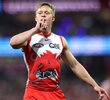Kennedy Parker
🎨𝖆𝖗𝖙𝖎𝖘𝖙🎨
- Moderator
- #1,308

Isaac Heeney
Isaac Heeney
PLAYERCARDSTART
5
Isaac Heeney
- Age
- 28
- Ht
- 185cm
- Wt
- 88kg
- Pos.
- M/F
Career
Season
Last 5
- D
- 18.2
- 5star
- K
- 10.4
- 4star
- HB
- 7.7
- 5star
- M
- 4.9
- 5star
- T
- 4.1
- 5star
- CL
- 2.2
- 4star
- D
- 14.3
- 3star
- K
- 8.8
- 4star
- HB
- 5.5
- 3star
- M
- 4.8
- 4star
- T
- 2.5
- 3star
- CL
- 0.8
- 3star
- D
- 10.4
- 3star
- K
- 7.2
- 3star
- HB
- 3.2
- 3star
- M
- 2.8
- 3star
- T
- 2.4
- 4star
- CL
- 0.8
- 3star
PLAYERCARDEND
Isaac Heeney
PLAYERCARDSTART
5
Isaac Heeney
- Age
- 28
- Ht
- 185cm
- Wt
- 88kg
- Pos.
- M/F
Career
Season
Last 5
- D
- 18.2
- 5star
- K
- 10.4
- 4star
- HB
- 7.7
- 5star
- M
- 4.9
- 5star
- T
- 4.1
- 5star
- CL
- 2.2
- 4star
- D
- 14.3
- 3star
- K
- 8.8
- 4star
- HB
- 5.5
- 3star
- M
- 4.8
- 4star
- T
- 2.5
- 3star
- CL
- 0.8
- 3star
- D
- 10.4
- 3star
- K
- 7.2
- 3star
- HB
- 3.2
- 3star
- M
- 2.8
- 3star
- T
- 2.4
- 4star
- CL
- 0.8
- 3star
PLAYERCARDEND
DOB: 05 May 1996
DEBUT: 2015
DRAFT: #18, 2014 National Draft
RECRUITED FROM: Cardiff (NSW)

Last edited by a moderator:













